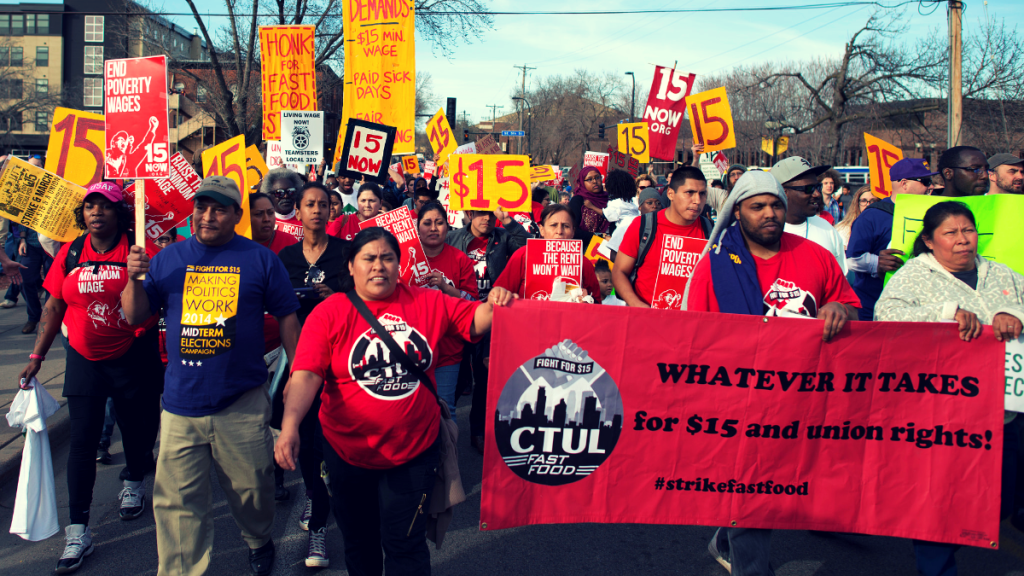2016’s edition of Labor Day followed a well-established tradition — unions claiming credit for every worker gain. Among their most common assertions, often incorporated in attributing negative wage trends to eroding union power, was that unions raise all workers’ wages. Unfortunately, unions retard rather than raise others’ real earning power.
Unions leverage special government-granted powers (e.g., unique exemptions from antitrust laws) allowing current employees to prevent competition from others willing to do the same work for less. This is a form of collusion that, done by any business, would be legally prosecuted.
The higher union wages that result are then credited for raising all workers’ wages because they supposedly force up other employers’ wages to keep their workers from leaving for those better-paying alternatives. However, their claim cannot be true without violating the law of demand.
Higher Wages, Fewer Jobs
Higher wages from unions’ government-imposed monopoly power would push up others’ wages only if it increased the number of such high paying jobs. The reason is that employers need only outbid employees’ actual options to retain them. But by artificially forcing up the cost of hiring their workers, unions reduce rather than increase the number of such jobs offered by employers, reflecting the reduced output consumers will buy at the higher costs and prices that result. Instead of improving the alternatives available to non-union workers, they are worsened, as the displaced workers are forced into competition with others for non-union jobs.
Those displaced workers increase the labor supply for non-union employment. That pushes wages for all workers in those jobs down, not up. Consequently, union wage premiums do not benefit all workers; benefits come primarily from other workers’ pockets.
With only about 7% of America’s private sector workforce remaining unionized, union power therefore cuts the real incomes of 13 out of 14 workers. And since unions also hike government service costs directly, as well as through other cost-increasing policies (e.g., the Davis-Bacon Act and Project Labor Agreements) which big labor’s political clout has pushed through, all other workers are also harmed as taxpayers.
Union Opposition to International Trade
Unions have also used the same “big lie” technique of constantly repeating the opposite of the truth as fact in other areas. For example, aware that their monopoly power to exclude competing workers stops at the border, unions have long been the core backers of protectionism. They focus their attention on those getting special protection, then assert that their benefits will also spread throughout the economy to benefit others. But they ignore protectionism’s much larger harms — to all other workers who would have gained from expanded exports; to all other workers who, as consumers, have their access to lower cost and superior imports (and domestic production forced to compete with it) restricted; and to all other workers adversely affected by the reduction in real wealth and income produced by domestic protectionism and induced foreign protectionist responses.
Given that Labor Day has been considered the traditional start of “serious” presidential campaigning, it is an appropriate time to remember just how damaging unions’ “big lie” strategy is. Its illogical twist can derail accurate understanding of the harm unions impose on almost all Americans, offering a sobering reminder that “It ain’t ignorance that does the most damage; its knowing so derned much that ain’t so.” After all, when people know they are ignorant of important variables that bear on their decisions, they usually don’t bet the house on them, but when they think they know what is false to be true, they often lose the house. And a lot of American houses are on the line this November.
This piece by Gary Galles was originally published at the Mises Institute.



